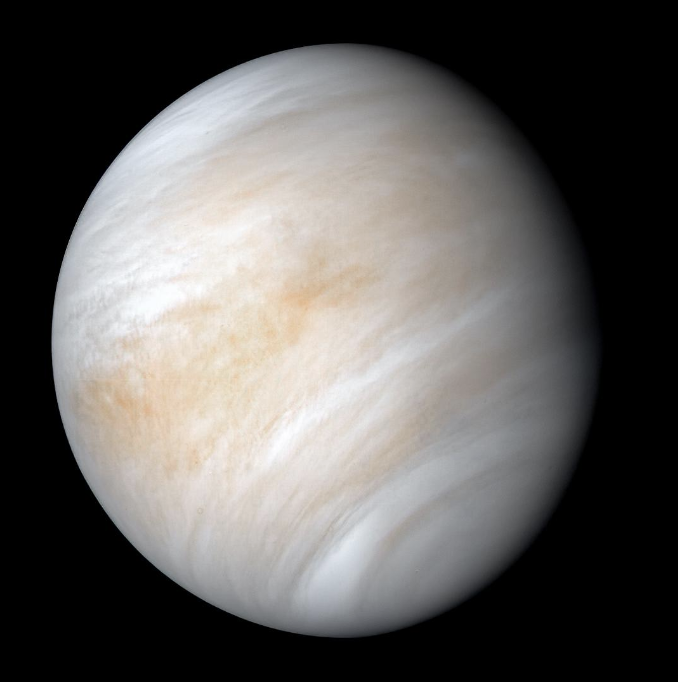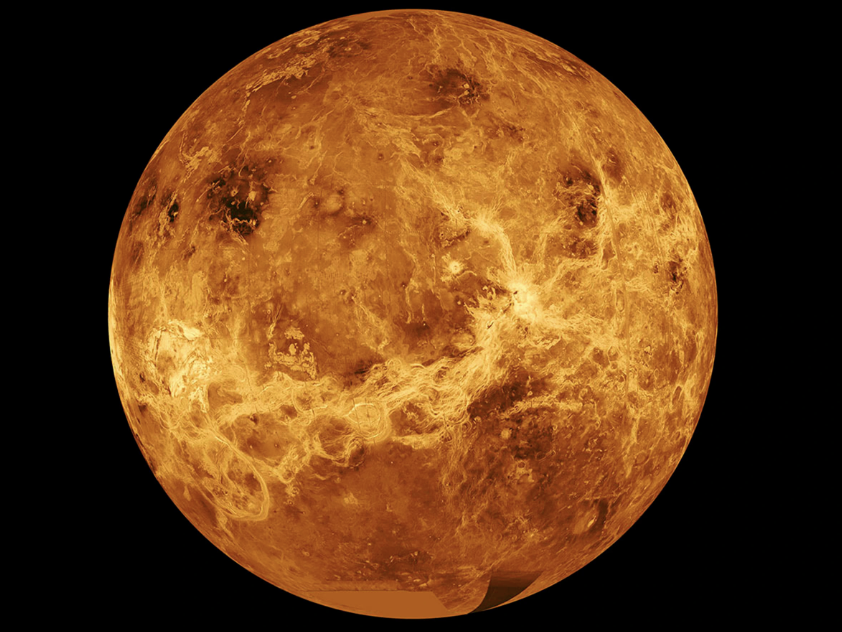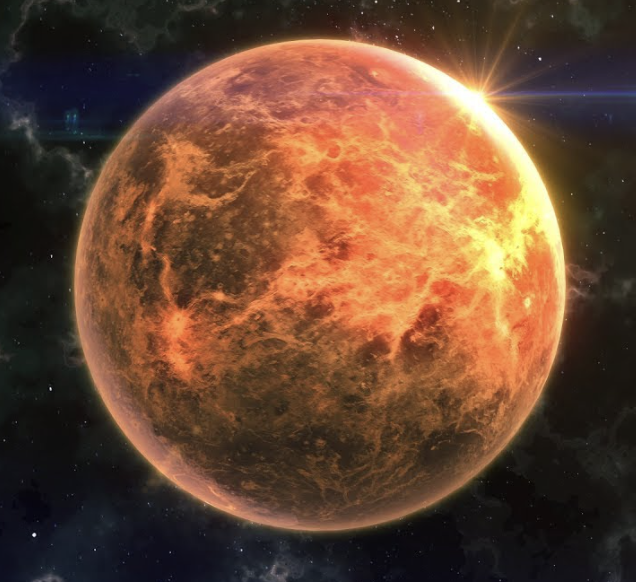5 Fascinating Facts about Venus
Venus, the second planet from the Sun, is a captivating celestial body that has intrigued scientists and stargazers alike for centuries. Often referred to as Earth’s sister planet due to its similar size and composition, Venus possesses a unique set of characteristics that set it apart from all other planets in our solar system. In this article, we explore five fascinating facts about Venus that shed light on its enigmatic nature.

Runaway Greenhouse Effect:
One of the most remarkable features of Venus is its extreme greenhouse effect. The planet’s dense atmosphere, primarily composed of carbon dioxide, traps an enormous amount of heat and creates a runaway greenhouse effect. This effect leads to a scorching surface temperature of approximately 900 degrees Fahrenheit (475 degrees Celsius), making Venus the hottest planet in our solar system. The extreme heat is a result of the thick atmosphere that prevents the escape of infrared radiation, causing a perpetual cycle of increasing temperatures.
A Slow and Retrograde Rotation
Unlike most planets that rotate in a counterclockwise direction, Venus rotates in the opposite direction, known as retrograde rotation. Additionally, Venus has an exceptionally slow rotation, taking approximately 243 Earth days to complete a full rotation on its axis. This means that a day on Venus is longer than its year, which is equivalent to around 225 Earth days. The reason behind this unusual rotation remains a subject of scientific investigation, and various theories have been proposed to explain this peculiarity.
Thick Cloud Cover
Venus is shrouded in a thick layer of clouds composed mainly of sulfuric acid. These clouds obscure the planet’s surface from direct view, making it challenging to study its geological features. However, advancements in radar technology and spacecraft missions have provided valuable insights into the planet’s surface. The clouds on Venus create a highly reflective atmosphere, causing the planet to appear bright and beautiful when viewed from Earth.

Volcanic Activity
Venus is a geologically active planet with a history of volcanic eruptions. Vast volcanic plains cover much of its surface, indicating significant volcanic activity in the past. The planet’s volcanoes, including the notable Maat Mons and Sif Mons, are among the largest in the solar system. The presence of volcanic features suggests a dynamic and volatile planet, with eruptions contributing to the thick atmosphere and greenhouse effect that characterize Venus today.
Extreme Atmospheric Pressure
Venus possesses an incredibly dense atmosphere, with atmospheric pressure at its surface approximately 92 times greater than that of Earth. The high pressure on Venus is comparable to being submerged approximately 1 kilometer (0.6 miles) underwater on Earth. The immense atmospheric pressure, combined with the planet’s extreme temperatures, creates a harsh environment where even robust spacecraft face significant challenges when attempting to land on the planet’s surface.
The Hottest Planetary Surface
As mentioned before, Venus holds the title for the hottest surface temperatures in our solar system. Not only is it hotter than Mercury, the closest planet to the Sun, but its surface is actually hotter than the surface of some stars. The extreme heat on Venus can melt metals such as lead, showcasing the intensity of its scorching environment.
Lack of Water and Liquid Ocean
While Earth is known as the “Blue Planet” due to its abundance of water, Venus is its polar opposite. The intense heat and greenhouse effect have caused Venus to lose its water over time. Today, the planet is bone-dry, with a desolate landscape devoid of oceans, lakes, or any liquid water. Instead, water vaporizes in the atmosphere due to the extreme temperatures and is broken down into hydrogen and oxygen, with the hydrogen eventually escaping into space.
Long Atmospheric Phenomena
Venus exhibits peculiar atmospheric phenomena that have fascinated scientists. One such phenomenon is its thick layer of clouds, which creates a perpetual blanket of darkness on the planet’s surface. These clouds reflect a significant amount of sunlight, resulting in a lack of distinct day and night cycles. Additionally, Venus experiences an optical illusion called the “Ashen Light.” During certain periods, observers on Earth claim to witness a faint glow on the dark side of Venus, adding to the planet’s mystique.
Lack of a Magnetic Field
Unlike Earth, Venus does not possess a global magnetic field. Earth’s magnetic field is generated by the motion of molten iron within its core. The absence of a magnetic field on Venus has puzzled scientists, as the internal dynamics and composition of the planet remain relatively unknown. The lack of a protective magnetic shield also exposes Venus to the harsh solar wind, resulting in the erosion of its atmosphere over millions of years.

Venusian Atmosphere and Earth Similarities
Despite the extreme conditions on Venus, there are intriguing similarities between its atmosphere and Earth’s. Both planets have predominantly nitrogen-dominated atmospheres, with Venus having a small fraction of nitrogen compared to Earth. Additionally, traces of sulfuric acid clouds found on Venus bear resemblance to Earth’s tropospheric aerosols. Studying Venus’s atmosphere provides valuable insights into the evolution and dynamics of planetary atmospheres, enhancing our understanding of not only Venus but also our own home planet.
Conclusion
Venus, the second planet from the Sun, continues to captivate us with its fascinating attributes and mysteries. Its runaway greenhouse effect, retrograde rotation, thick cloud cover, volcanic activity, and extreme atmospheric pressure all contribute to its distinct identity within our solar system. As scientists continue to study and explore this enigmatic world, Venus holds the potential to provide valuable insights into the mechanisms that shape planetary environments and deepen our understanding of the possibilities for life beyond our home planet.
With its blistering temperatures, thick atmosphere, lack of water, and intriguing atmospheric phenomena, Venus continues to fascinate astronomers and scientists. As we uncover more about this enigmatic planet through space missions and research, we gain valuable knowledge about the diverse nature of planetary bodies and the factors that shape their environments. Venus, the scorching jewel of our solar system, serves as a reminder of the complex and awe-inspiring wonders that exist beyond Earth.
